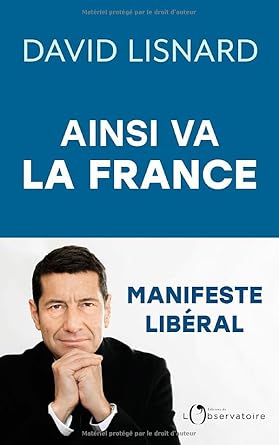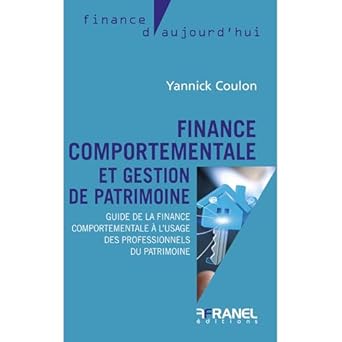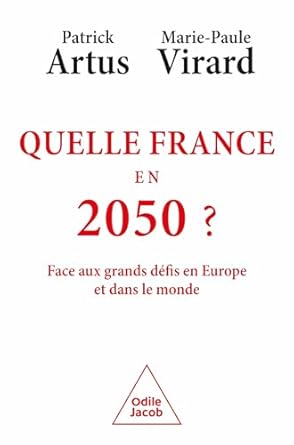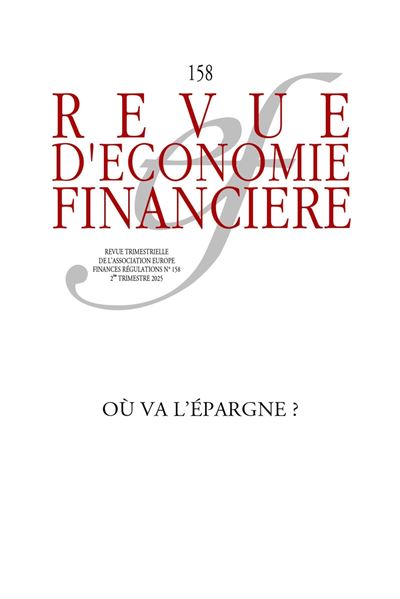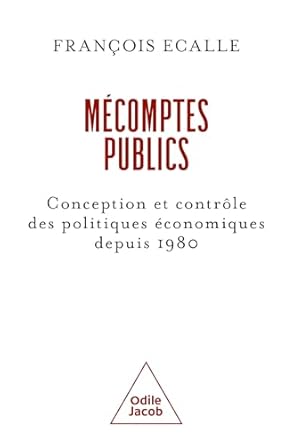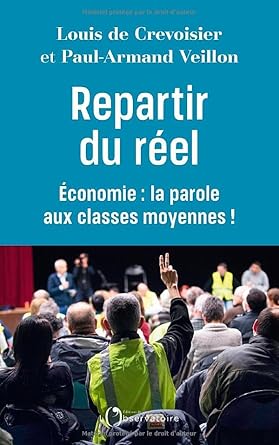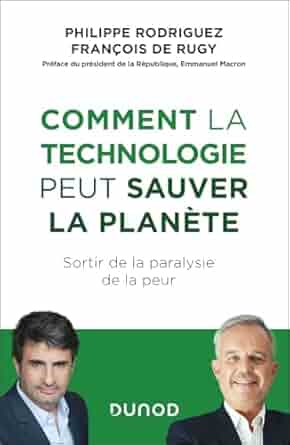The author signs with Ainsi va la France: Manifeste libéral an incisive diagnosis of the ills that paralyze France. Carried by a lively pen, with sometimes pamphleteering accents, tempered by the clinical and concrete analysis of a local practitioner, he traces a clear path to avert this decline. Beginning his demonstration by focusing on “seeing what we see”, as Péguy wrote, the author draws a twilight observation. France, once a beacon of the Enlightenment, is withering under a centralized, hypertrophied state, captive to an out-of-control debt. Its republican universalism is buckling under the blows of a separatist communitarianism, fueled by mass immigration. The nation fails to guarantee the absolute rights of the social pact: public order, the sister of freedom, is undermined by a criminal policy deemed complacent; public education is lost in wokism, to the detriment of basic learning; entrepreneurship is asphyxiated by hypernormativity and crushing production taxes; the competitiveness of agriculture and industries is hampered by punitive technocratic environmentalism, erratic energy policy and Kafkaesque administration. Having made this observation, the author sets out to draw up a recovery plan for the country. He calls for the modernization of the state through bold decentralization, based on subsidiarity, where mayors, artisans of reality, become levers of innovation. An implacable fight against delinquency and Islamism with a return to assimilationism is advocated. He calls for the revitalization of culture and education to reconnect with universal values, an antidote to identity tensions. He pleads for a civic leap, which requires reforms to save the social pact weakened by a health system in crisis, a declining demography and a school collapse: partial capitalization of pensions, overhaul of unemployment insurance, natalist policy, and a school refocused on fundamental knowledge, in opposition to wokism and racialism, scourges of a “decivilization” that the author fights with obstinacy. He encourages an ecological market economy, with nuclear power, an essentially carbon-free energy, as a strategic pivot, and sustainable and competitive agriculture, freed from absurd regulatory rigidities. He advocates an industrial reconquest in the automotive, space and AI sectors, made possible by a reduction in public spending and a massive reduction in production taxes. His manifesto continues with a partisan analysis of the 2024 European elections, marked by the rise of the National Rally and the resilience of the Republican right led by François-Xavier Bellamy, which led the President of the Republic to dissolve the National Assembly. However, in a France often resistant to change, if his observation is shared by the majority of commentators and public opinion, his vision, radical in the etymological sense, could come up against the administrative technostructure and intermediary bodies, with unions at the forefront. We are then entitled to question the improbable adherence to this ambitious project by a high administration whose ethics of conviction risks crumbling in the face of the demands of the ethics of responsibility dear to Max Weber. David Lisnard, born in 1969 in Limoges and a graduate of Sciences Po Bordeaux, is a French politician and member of the Republicans. Founder of the Nouvelle Énergie movement and mayor of Cannes since 2014, he has been president of the Association of Mayors of France since 2021. Yoann Lopez
Yannick COULON, Finance comportementale et gestion du patrimoine. Guide de la finance comportementale à l’usage des professionnels du patrimoine, Eds Arnaud Franel, 2025, 169 pages.
The author answers questions shared by the French in need of investment of their savings in an uncertain financial market, but also by their banking or independent advisers, faced with the development of Artificial Intelligence. His latest book focuses on behavioral finance, which introduces the psychology of actors in financial decisions, and wealth management, which has become difficult due to the diversification of types of transactions and financial products. He recalls the fundamentals of classical finance, based on the rationality of investors, on the notion of fundamental value, and on the principle of market efficiency (defended by Fama), then he poses the hypotheses of behavioral finance, based on the (relative) irrationality of the actors, the notion of market value, and the sub-efficiency of the market (supported by Minsky and Thaler). After explaining the main models of classical and behavioral finance, Yannick Coulon analyzes at length, after Tversky and Kahneman, the multiple psychological biases – perceptual, cognitive, and emotional – as well as collective, which affect the arbitrations of investors and their advisers. He demonstrates the value of active and passive portfolio management. He shows the limits of AI management and graphical analysis. He recalls the regulatory framework for financial investments (MIFID 1 and 2) and real estate. The book is accompanied by quotes, diagrams, tests, and illuminating examples. The reader will regret that it does not sufficiently explore the issues related to structured products and crypto-assets. The author has a long experience as a banker and is currently a professor in a management school. Jean-Jacques Pluchart
Patrick ARTUS et Marie-Paule VIRARD. Quelle France en 2050 ? – 208 pages, Eds Odile Jacob, 2025
The authors have maintained their editorial commitment to presenting facts, studies and commentary without “complacency”! “Pessimism is mood; optimism is will”; here, pessimism is intelligence and unfortunately convincing, optimism is necessity, otherwise the sustainability of our economic and social models is not assured! Faced with the threat of downgrading, will France and Europe be able to keep up with the American, Chinese or Indian economies? Without divulging the conclusion, the book offers a few keys to ensure that we don’t fall too far behind on the Kantian theme: what are we allowed to hope for? For the French, it’s a question of taking up six major challenges: demographic ageing, the fragmentation of the world, the energy transition (and not the ecological transition…), the battle of savings, not forgetting the upheavals associated with the transition from an economy of abundance to one of scarcity. Ageing is on the rise, and is associated with a decline in productivity gains, a structural increase in inflation, and a lasting imbalance in public finances. The challenge is therefore to prevent ageing from weighing too heavily on long-term growth, and hence on people’s standard of living. The fragmentation of the world is leading to a more expensive and less efficient economy, which will primarily affect emerging countries; France and other developed countries should adapt to this new situation by maintaining sufficient interdependence. To maintain its industrial base in 2050, Europe, and France in particular, will have to complete its cultural transformation and mobilize national and mutualized financial resources, and above all private savings, either voluntarily or “forced” (compulsory borrowing and/or taxation). To mobilize long-term savings, it will be necessary to avoid public deficits aimed at stimulating consumption, to avoid shortening the average maturity of financial assets, to avoid reducing the degree of risk on these assets, to avoid encouraging the use of savings for consumption, and to favor, through economic policy, any measure favorable to increasing incomes and therefore available savings. These recommendations should lead to a different sharing of value from that experienced since the 1980s. Similarly, for the energy transition to take place as smoothly as possible, “we need to move away from the neo-liberal model, and get companies and their shareholders to accept a relative reduction in the return on their equity”. “All economic agents are going to have to adjust their priorities and behavior”, as “the transition promises to be difficult for everyone”. Decision-makers must make an effort to convince the public that inaction will have an economic and, above all, a social cost that justifies efforts now and massive investment to found a new, solid and fairer growth model; thus rejecting any growth model that leads to the mortal attrition of the most fragile economic agents. The last two chapters of the book are devoted to the future of France and the eurozone: how to escape the trap of weak growth, and how to devise an economic, monetary (the ECB) and budgetary policy capable of changing the situation? In terms of growth, we need to increase the number of hours worked by the entire population (122 hours less than the European average), by increasing the working week (but only one hour behind Germany) and reducing the number of work stoppages (twice as high in France as in Germany). Then, we need to increase the employment rate through training and incentives; since we’re dealing with poorly trained people, the economy’s productivity gains will be delayed. Finally, technological innovation will require substantial investment, which can be financed by the zone’s savings, provided these do not go to the United States and can circulate smoothly between the countries in the zone. Last but not least: the Commission’s economic policy and the ECB’s monetary policy. The solutions put forward are “disruptive”, to borrow a term from the authors. Better “a disruptive policy than a dead one”! The “classic” criteria are obsolete, as they still fail to differentiate between operating and capital expenditure, and do not sufficiently take into account the notion of cycles, contrary to the decisions taken during the COVID crisis. The authors even consider that such tightening would lead to Europe’s definitive stalling. What is needed, therefore, is flexibility guided by clear industrial strategies, and a renewal of Community loans. As for monetary policy, “it is ineffective”. At the time of writing, the authors considered that the fall in inflation was the result of a drop in energy and raw material prices, but that inflation remained at around 3.5%, a level that would be reached again in 2025. This summer, it has to be said that this forecast has not been borne out. But see…. In any case, the authors question the 2% “dogma”, considering that the target should be closer to the “natural rate” and vary according to economic cycles (Friedman versus Hayek!). Certainly, to get out of the current and future slump, we need to recreate a negative real interest curve, enabling us, among other things, to maintain or even increase deficits without increasing debt; to “rewrite a few articles of the Maastricht Treaty”; to pursue an “expansionary monetary policy” and, finally, to promote the establishment of a complete “Banking Union” and “Savings and Investment Union”. It’s interesting to note that the economic proposals on wealth creation, mobilizing savings and financing investment in France are to be found in the “Bayrou plan” of summer 2025 (which lacks an element on pensions for well-known political reasons), and that the monetary guidelines are being taken by the government to Brussels and Frankfurt. But, as we can see, the priorities needed in France are not necessarily acceptable in Germany, the Netherlands or Italy. Like its predecessors, this well-documented book is a useful contribution to the debate; it is even “in tune with the times”, which is not often the case in a complicated subject. All that remains is for politicians to identify the possible paths. “Somebody would have said: ”What a task! Column written by Dominique Chesneau
Jean-Philippe DENIS, Aude DEVILLE et Olivier MEIER, L’enseignement supérieur en transition : propositions pour l’avenir, EMS Eds, 2024, ,328 pages.
The book, written by French-speaking university lecturers and researchers, traces the multiple aspects of the profound transformation of French universities and private institutions, observed over the past two decades, particularly in the field of management sciences, which make up nearly 10% of higher education students. These changes have made it possible to align French institutions and procedures with European directives and certain international practices. They intervened in particular under the effect of the new LMD (Bachelor’s, Master’s, Doctorate) curriculum in 2002, the law relating to the freedoms and responsibilities of universities (LRU) in 2007, the future investment programs in 2010, the 2013 law promoting groupings and cooperation between universities within the framework of COMUE or EPE, and more recently, measures favorable to MOOC (Massive Open Online Courses) and the research programming law (LPR) in 2020. The Old Public Administration (OPA) analyzed by Bourdieu more than a century ago has given way to New Public Management (NPM), then to New Public Governance (NPG), Public Value Management (PVM), Austerity Public Management (APM), and Sustainability Management (SM) respectful of ESG (Environmental Social Governance) principles. This transformation was marked by debates between all stakeholders, in the spirit of Critical Management Studies. The authors strive to answer the main questions raised by the application of this uninterrupted wave of reforms, and in particular, by the rapid growth of the student population. They are particularly concerned about the rise in enrollment – now the majority in the management discipline – in the 200 or so private institutions, whose level they consider to be increasingly unequal. While some of them have obtained international labels, only 65 universities and schools benefit from targeted training and diplomas recognized by the State. The authors criticize the current procedures for evaluating these schools and make recommendations to avoid the disappointment of their students and their future employers. The authors also question the conditions of good governance of academic research. They recall that the latter requires the freedom and expertise of the researcher, but also favorable political and financial conditions. It should not be exclusively “governed by numbers” (quantitative research and bibliometrics), by “academic bureaucracy”, by English as the “language of science”, by American journals, and/or by the search for corporate performance. Jean-Jacques PLUCHART
Marie-Laure BARUT-ETHERINGTON* et Pierre BOLLON**, où va l’ épargne ?, Revue d’économie financière , n*158- 2e trim 2025
In these times of Himalayan investment needs, to respond to energy, societal, economic and budgetary transitions, the temptation of opinion fueled by political debates remains to seek answers (culprits?) from the so-called “haves” of Society and “big business”. Nothing very new in itself… except the inclusion of Savings in this never-ending quest for new scapegoats. Thus, the age-old debate that divides many economists is once again relevant, on the question of whether Savings (qualified nationally as excessive), but immutable as a great popular value of republican virtue, could become a brake on investment, growth, employment and ultimately on demand itself… Also, this new publication of the REF, based on a plethora of brilliant authors, comes at the right time and in three well-documented chapters, bringing to the reflection factual elements, context and a long-term strategic vision. The first part of the book focuses on providing an overview of the evolution of savings in France compared to Europe, while the second chapter deals with the heterogeneity of saving behavior in several dimensions (in relation to the holding of risky assets, according to household characteristics, life cycle, and the role of certain public policies. Finally, the third part sheds light on the great question of the mobilization of private savings, in the service of the French and European economy. It should be noted that in France, if individuals save a lot (15% on average) and above the main OECD countries, they do so… rather badly… by favoring liquid and less risky assets. The resulting low shareholding and, moreover, the increase in the stock of foreign shares have adverse consequences in terms of sovereignty and competitiveness for our country. The need for a regulation that favors less “safe and liquid” assets is called for by all financial players, insurers, banks and asset managers. The authors argue for an acceleration of the implementation of a true “Union for Savings and Investment”, by identifying four priority areas: redesigning market infrastructures to reduce costs, unifying the supervision of capital markets for better risk sharing, reviving securitization and financing the green transition, and promoting the European venture capital industry to finance innovative companies. As this remarkable publication shows, the new path that seems to be opening up for Savings is covered with beautiful promises… no doubt still accompanied by this popular saying: “He who does not save a penny will never have two.” *DGA at the Banque de France ** Director of European Affairs at the FEI Jean-Louis CHAMBON
François ECALLE, Mécomptes Publics, Eds Odile Jacob, 311 pages.
This book is a journey through the author’s personal history and the public accounts of the French state. First of all, we follow the young centralist as he joins the ENA and discovers, throughout his many training courses, the (dys)functioning, the mysteries, the conflicts of different public services and administrations in the field. Then, through these 32 years spent in the service of the republic, initially, in the forecasting department of the Ministry of Finance, we learn, among other things, how the Ministry of Finance works, how budget forecasts are made, international exchange relations, the lack of cooperation and coordination between the different departments of the ministry. But also, since we have the chance to (re)live the 80s/90s with François Ecalle, we follow him during the liberalization of prices, the preparation of the euro and the European budgetary rules as well as the difficult opening of services to competition. Then, at the Court of Auditors, we control the banking sector and discover, at the Banque de France, an accounting system that is, to say the least, heterogeneous, but also very specific accounts and secret loans from the state, accounting and tax processing of certain equity investments in BNP and Banexi, whose legal exemplarity is not obvious. After the banking sector, the journey continues in the public companies of the world of transport, in agriculture, and we hallucinate with the author in front of the irregularities, the favors obtained, the bad choices, the waste, the absurd reforms, and the calamitous management. Some of the recommendations proposed during the audits have been implemented, but these decisions took a long time to make and were sometimes thwarted or canceled by other reforms. It is striking to note the permanence of fiscal, economic, financial, and political problems and the measures that should be taken to solve them. The observations, the diagnoses made on social VAT, on pensions, on employment policy, on sectoral policies such as industry, housing, agriculture, etc. and the recommendations proposed thirty years ago are still relevant. But all is well, the Court of Auditors continues to publish reports that remain a dead letter, the Treasury management continues to write to its minister that the public deficits recorded in the finance law are unattainable without the adjustment of accounts, the state continues to let its deficit and debt slip away and the French continue to ask the state for everything. Be careful, however, not to lose our sovereignty through the action of certain foreign actors… François Ecalle is Honorary Master Advisor at the Court of Auditors and President of Fipeco, the Public Finance and Economy Association Ph Alezard
DE CREVOISIER Louis, VEILLON Paul-Armand. Repartir du réel, L’OBSERVATOIRE, 205 pages
“Starting from reality”, a certain touch of arrogance in the title as if it was just necessary to start again and listen to what the “France from below” says to put equity and justice in public policies and reforms. The authors report a certain self-criticism of their peers and what they have lacked until today: understanding the experience of workers, far from the metropolises, public transport and the Grandes Écoles. They drew inspiration from their experiences, the cahiers de doléances and the reports of the great national debate established in 2019, a few months after the start of the yellow vests crisis. In December 2024, President Emmanuel Macron called, “to govern”, “from reality and not from fantasies or untruths”. The words are clear, but the middle classes are getting impatient. These middle classes, neither poor nor rich, seek at all costs to have a job that pays, a decent standard of living and hope for their social advancement and that of their children. Starting point of the yellow vests crisis and the mobilizations on the roundabouts. Employees must be able to consider an increase in their wages throughout their career and the social system must be more incentive to work: the gap between inactivity and a job at the minimum wage is considered too small. The authors propose the creation of an “employee dividend” in order to increase the sharing of value. In an indebted France, the financing of the social model remains a stumbling block between politicians and economists. Solutions exist to support the purchasing power of workers but require courage in implementation: lower public spending, increase social contributions and/or working time, or change the way the pension system works. Taxes for whom and for what? The middle classes are not against taxes but want value for their money and are not satisfied with the level of public services. Given this, the authors propose to directly link the Court of Auditors to Parliament in order to have a better assessment of public spending. Regarding taxation, it must be more virtuous in order to reward behaviors that contribute to collective interests. Purchasing power, another theme discussed at length by politicians in search of voters. In a service and deindustrialized France, productivity has been slowing down for several decades and can no longer guarantee dynamic growth. Constrained by their income, the middle classes are eyeing their spending. Among the avenues mentioned for leveraging growth, the authors mention complementary health and highways. Added to this is the ecological crisis and adaptation to the energy transition. Once again, the middle classes find themselves in difficulty to find decent, isolated housing and are often “strangled” by rising energy costs. In the last part, the authors highlight the opportunities for the middle classes. In terms of education, the authors wish to strengthen the level of mathematics and encourage students to move towards scientific fields; without forgetting the revaluation of teachers. At the dawn of future electoral periods and budgeting, the authors thus establish many concrete proposals that must be at the heart of the debates. An educational and enlightening book, a must read. Louis DE CREVOISIER is a senior official, Inspector of Finance. He was previously Deputy Director of the Cabinet of the Minister of Transport. Paul-Armand VEILLON is a senior civil servant, deputy director of the office of the Minister in charge of Public Accounts. Sophie FRIOT
Olivier BABEAU, L’ère de la flemme, Editions Buchet-Chastel, 288 pages, février 2025.
The author – PRIX TURGOT 2020 – in his latest work transports us to a new dimension by explaining the paradigm shift that is the loss of the sense of effort. A civilizational rupture is taking place. The effort that was exalted – and which is at the heart of any successful life – is no longer of interest, it is no longer given as an example, and we prefer the egalitarian virtues of humility and passivity. We no longer salute the hero, but the victim. Elitism was a laudatory qualification, we are wary of excellence, the mediocre reassures, we have entered the lazy thirties which will logically lead to a form of economic and political bankruptcy and to a cultural, economic colonization and also to the end of our political model based on democracy because the era of laziness mainly concerns the old countries of the West. Artificial intelligence does not make effort useless, but it changes what is essential to live happily. We cannot rule out the possibility that work will disappear and if the civilization of idleness is confused with that of laziness – which has significant consequences on our material lives – it will lead to the disappearance of the individual. Effort also dies from the profound transformation of our relationship with society because it is no longer necessary to obtain most of the things that yesterday cost so much to acquire. One sometimes has the impression that the essential goal of every citizen is to succeed in capturing the perks of redistribution during working life and retirement. The preference for laziness has spread to all dimensions of society. The extraordinary latitude of choice conferred by prosperity ends up being tiresome, because freed from the burden of hunger, we are less able to bear the other rules that constrain us. The development of modern civilization has changed the rites of integration and the rules of the social game. For millennia, belonging to a group meant conforming, otherwise one was not recognized as a member. We do not negotiate with the rigor of social prescriptions, because existence was precarious and relatively short, suffering and death being omnipresent. One could not be idle; the idleness of the Greek citizen is not considered laziness because it allows a work on oneself beneficial for the community. One did not choose one’s spouse or religion. Degradation is no less formidable than death, since an existence rejected by the group is not really an existence. We must make an essential difference between pre-industrial society and ours. Today, the range of choices to be made in our lives is almost infinite. Effort is no longer the prerequisite for survival. Everyone enjoys a piece of the collective prosperity without having to participate. This opens up a new possibility: doing nothing. And it all starts at school, for the success rates of the patent are boosted by 3 to 6 points according to the academies. The progression of the number of baccalaureate recipients is a sign of its change of function. It has become a ritual of social aggregation. It is up to the institution to adapt rather than to ask students to make an effort. Now, we no longer read because the effort required is too great, we learn by entertaining ourselves via digital means. The effort would not have disappeared if it had not been discriminated against. At the beginning of the 21st century, all the conditions are met for the death knell of the effort, which is no longer the rule but the exception, or rather that it is replaced by the trumpets of laziness, because the progress of industrial and agricultural civilization has been immense. We have access to a standard of living prodigiously superior to that of our ancestors at the cost of a considerably lower effort. We want to consume, but less and less to produce. It is no longer a question of achieving the best possible performance, but of doing what is enough to earn a salary. Laziness is no longer a flaw but an asset to be managed, the most spectacular sign – sedentary lifestyle – of triumphant laziness is the decline of our physical abilities. Today’s teenagers have lost a quarter of their lung capacity compared to those of 1990. In September 2022, Santé Publique France launched an advertising campaign “getting teenagers to move is not easy, but encouraging them is important” compare to another advertising campaign “install WhatsApp effortlessly on your tablet”. In December 2023, we celebrated the 25th anniversary of the 35-hour work week, which caused us to lose one of our two competitive advantages vis-à-vis Germany, and the 42nd anniversary of retirement at 60 years of age by distribution. The problem with political decisions is that they take a very long time to prove their merits or their shortcomings. In this case, these decisions turn out to be absolute disasters. The 35-hour week was the illusion of free money before the letter (it should be noted that we were not copied on this subject). France works too little. In 1980, we were the 13th country in terms of GDP per capita, and we are 25th in 2023. France has been living beyond its means for several decades. We buy the work we don’t want to do abroad by paying either with assets or with a drawing right on our future taxes. Yesterday, we only existed through the group, now everything happens as if the group only existed for us. This is the second pillar of the effort that collapses, we no longer exist for others but to have fun. Avoiding effort decreases the quantity produced but also our tolerance to effort. This also affects China, where revolt is not possible and young people protest by staying in bed. The end of the effort disarms the mind by weakening reason in favor of emotion, it makes the bed of the serious social crisis that we are going through. The world of emotion claims
Vladimir Atlani-VictorSTORCHAN , Anti-manuel d’intelligence artificielle, Eyrolles, 192 pages.
This is a title that intrigues, at first glance, and which reflects the general tone of this work which seeks to demolish the ideas received on AI and to stimulate our intellect to take advantage of it in a reasoned and reasonable use, bringing great progress in all areas of social life, scientific life and business life. The title “anti-manual” means that there is not one AI but AI with different expectations and models for each of them. There is, therefore, no perfect user manual, but a progressive learning, both empirical and scientific, of the immense, even unlimited possibilities offered by these technologies. In the broadest sense, AI encompasses all the techniques that can replicate the cognitive behavior of the human brain on machines. Beyond a simple replication, the explosion of absorption capacities, by machines of increasingly large volumes of data, has made it possible to develop uses of these increasingly promising technologies. This is the case of “machine learning” which, in a very simplistic way, beyond the automation of existing processes, will strive to optimize the use of computers based on real examples that will make it adapt new ways of working, for example, in the medical, legal, anti-fraud fields… Beyond the restructuring of complex processes, the potential of AI extends to the powerful creation of new organizational models in all areas of society, “deep learning”, consuming exponentially growing volumes of data. If the potential for progress is considerable, the ethical and geopolitical risks are immense and can threaten individual freedom. In short, there is a risk for our democracies. One requirement is the implementation of very strict governance rules at both the national and global levels. One of the strengths of the book is its clarity and the many examples and anecdotes that illustrate the point and fortunately complement a very broad, very rich and sometimes difficult subject. This enlightening book deserves a prize. Denis Molho
Comment la technologie peut sauver la planète – Sortir de la paralysie de la peur ,Philippe RODRIGUEZ et François de RUGY,Dunod, février 2025, 180 pages.
“Neither a fantasized return, nor a decline; This struggle is a matter of life and death” We live in a time that forces us into bitter economic rivalries against the backdrop of energy transition. We must move forward without fear or complaint and stick to our agenda. This book by Philippe Rodriguez and François de Rugy, divided into five parts, bears witness to the obstacles to be overcome, the challenges to be met, the initiatives to be undertaken, and the means to be devoted to this national priority, which must give a central place to the deployment of innovations of all kinds to preserve France’s technological sovereignty. In the first three chapters, the authors highlight the narrow path to be traced between a technophile Prometheism and ecological sobriety. The abundant catalog of leads and the enumeration of pillars, energy sources, actions to be taken, and their expected returns are reviewed to achieve energy efficiency. Storage appears to be a crucial element in managing this transition. While France is lagging behind in “cleantech”, disruptive innovations such as SMRs provide it with undeniable advantages. This transition and its complexity are at the heart of diplomatic and geopolitical influences in view of the concentration of energy resources in their distribution in certain parts of the world. In this regard, rare earths, placed at the heart of green technologies, pose a serious dilemma related to the requirement of the highly polluting refining of this resource. The last two chapters highlight the pressing time in this period of budgetary scarcity and the importance of the efforts to be made. The Draghi report of September 2024, with the doubling of the budget to 200 billion euros of Europe’s program for research and innovation, must be reflected in national strategies. The authors call for an administrative revolution as a cardinal condition of success. The opus closes optimistically with eight avenues and a long list of recommendations to think outside the box and boost the energy transition. But it is indeed a paradigm shift that is at stake, with a certain apostolic effect. The uniqueness of this enlightened book can be summed up in a few words: we must act quickly! But the exercise is not simple and seems to have to articulate short-term actions in a long-term approach. Philippe RODRIGUEZ, director of Avolta, and of several companies for thirty years. His experience as a multi-entrepreneur and his various activities allow him to be a particularly wise observer of current themes. François de RUGY, was Minister of the Ecological and Solidarity Transition (20189-2019) and played a key role in the adoption of laws related to ecological issues. As a Senior Advisor at Avolta and an independent consultant, he helps companies and investors develop new ecological models. Reading notes by Freddi Godet des Marais –


